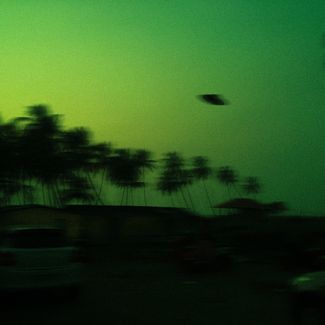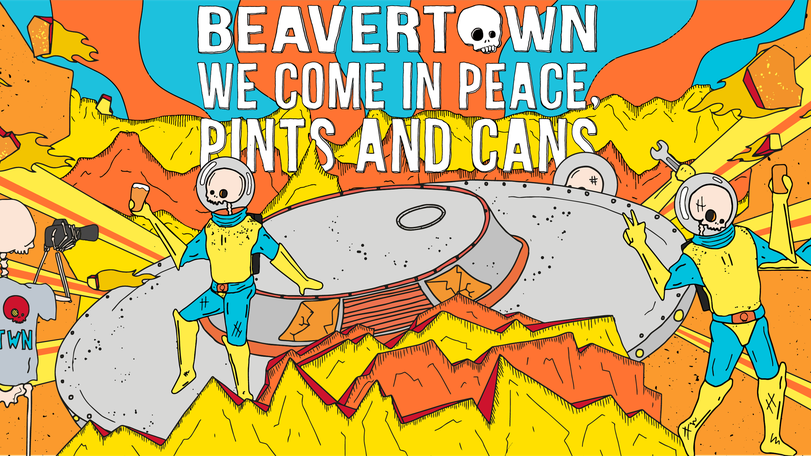
feature
Set faces to stun - UFOs and aliens in ads
Take me to your leader.... actually, the shop counter will do
17 April 2023
Despite attempts to rebrand UFOs to UAP (Unidentified Aerial Phenomena), they have yet to shed their longstanding propensity to terrify.
The recent Chinese spy/weather balloons that were spotted over America helped play into a sense of deep-seated paranoia in the country, which stems from H.G. Wells' 1897 book The War of the Worlds but reached a crescendo in the post-Second World War era of paranoia over nuclear armageddon. And its never really gone away since.
This 1996 spot for VW Golf gently pokes fun at some Americans' fear of the unknown or unexpected:
There were more reported UAP sightings between March 2021 and August 2022 than in the previous 17 years, including nearly 200 that remain unexplained.
Cultural commentators identify these periodic waves of US UFO sightings as "flaps" - they come and they go, and we're in the middle of one right now. Similarly, the advertising industry mirrors these "flaps" in its use of UFOs and aliens from outer space in ads.
The 1970s and 1980s saw a particular surge in UFO and alien-related ads, presumably linked to the many popular films of that era, such as ET and Aliens (maybe all linked to the heating up of the Cold War).
Close Encounters, too, seems to have spawned a body of commercial work - the History of Advertising Trust website lists five advertisers who borrowed the name of this film for TV ads of their own. Advertisers using it range from Hellman's Mayonnaise to Vodafone.
With its Star Wars-themed soundtrack, this 1984 ad for Heinz's suitably named Invaders product is typical of the genre:
And it's not difficult to work out the inspiration behind the straplines for these two ads, for Persil and Beaver Town:
The universal appeal of UFOs and aliens as popular culture appendages for ads, then, is apparent. But what else do UFOs provide to advertisers?
Valentina Amenta, creative director at Publicis.Poke, thinks that they are also useful tools that appeal to our shared imagination. She comments: “Perhaps because when we look to the stars, we are struck by the idea that we may not be alone in our infinite universe. Advertising seeks to build upon our shared imagination, the more universal the insight the more likely it is a piece of creative will work across countries and cultures. And what could be more universal than a UFO?!”
As well as being translatable across countries and cultures, UFOs have an added benefit - they can be equally universally applied to a range of products in different sectors, and not just those that are in need of a bit of sci-fi magic (or star) dust.
Dan Hulse, chief strategy officer at St. Luke's, explains: "In popular culture, when there are UFOs in the sky, they've come to earth for two reasons. Either they’re here to destroy or enslave us (think Independence Day, Mars Attacks or countless others) or they’re here to enlighten us (The Day the Earth Stood Still, Arrival).
"The second reason is why brands use aliens so much. They can basically say ‘we haven’t got any of your silly human baggage, so we can see how amazing this brand of instant mash or catalogue retailer or craft beer actually is'." And here's Argos using UFOs to prove his point:
Hulse continues: "When most consumer decisions are made on autopilot, at their best, aliens in ads make us stop and see the familiar with fresh eyes."
It's something that Owen Lee, chief creative officer at FCB Inferno, agrees with. He says that the words 'authenticity' and 'real life' are overused in advertising, especially when so much of it can be humdrum and boring. What's more exciting, then, than helping promote the idea that unexplained life forms might be out there, especially if it helps shift some more product.
"Our job is to make things more exciting and we all want to believe that there are aliens out there, somewhere. And advertising is the richer for it," says Lee. "The Smash Martians is often cited as one of the best ads of all time, Pizza Hut were actually brave enough to run an entire ad in Klingon including their brand name, and even John Lewis chose to introduce an alien to Christmas in 2021 [see below]".
Lee continues: "Right now, advertising could do with a little more escapism and fantasy."
Atomic used aliens for its recent Papa John's campaign, showing the variety of sectors to which they can be applied. The agency's senior strategist Randell Beckford says: "For our Papa Johns campaign, the freedom and escapism that aliens represent allowed us to connect with a younger audience who were pushing the boundaries of make-up and fashion."
Beckford continues: "Against a reality that is predominantly negative, audiences are yearning for ‘out of this world’ creative that provides them with some distraction and light relief."
Out of this world - and outsiders too. Aliens and UFOs provide an otherworldly perspective to ads that humans (or indeed animals, robots or other brand icons) just can't.
Jules Middleton and Peigh Asante, creatives at New Commercial Arts, say: "The outsider in advertising is a great trope to show us the power of a product or a new perspective on it, so aliens are the perfect vehicle for this. In the last few years aliens have cropped up a lot in TV product advertising, from Freeview to a favourite, this Thinkbox ad [see below]."
So maybe there's no need to get in a "flap", as many Americans seem to be in this current climate of uncertainty.
One certainty is that aliens and UFOs will continue to be a staple of advertising: they can be universally applied across categories and countries; they are easy to attach to popular culture; they are outsiders that provide fantasy, escapism and a new perspective.
And as this spot for Wrigleys Airwaves shows, they wouldn't want to be be part of our humdrum earthly life either:







